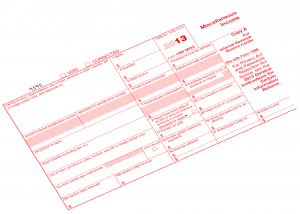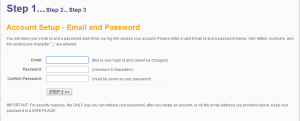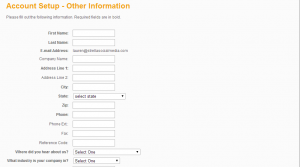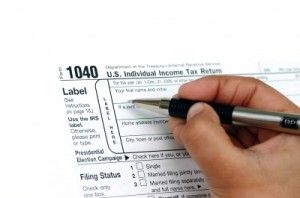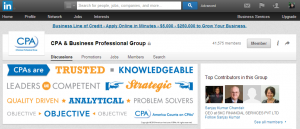The Affordable Care Act (ACA) reporting requirements are on the minds of employers, C-level executives and business owners. With hefty penalties for not providing the right information on the annual returns and for not filing before the deadlines, companies realize that they need to understand what health insurance coverage data they have to report and when. The ACA laws are complicated, but companies must follow them to be compliant with the Internal Revenue Service (IRS).
The New Requirements
An applicable large employer (ALE) is required to submit two forms known as the C-Forms. These forms are IRS Form 1094-C and IRS Form 1095-C. Large employers are companies with 50 or more full-time employees. A full-time employee (FTE) is a person who works 30 hours or more per week or 130 hours per month. Under certain conditions, other reporting forms are required known as the B-Forms. These forms are 1094-B and 1095-B.
Form 1094-C is titled the Transmittal of Employer-Provided Health Insurance Offer and Coverage Information Returns. The 1094-C is submitted to the IRS and provides information about a company’s full-time employees. The information includes the type of health insurance the company offers full-time employees and the time period that the health insurance covers. This form is also used for the company to tell the IRS about its workforce, such as the number of full-time employees and the number of part-time employees.
IRS Form 1095-C is titled Employer-Provided Health Insurance Offer and Coverage Insurance. The 1095-C uses the same information provided in Form 1094-C, but the employer sends this form to employees. Every FTE has to receive the 1094-C. The employees who are not required to get a C-Form are those in a waiting period to start receiving health coverage. Employers are also not required to give a C-Form to variable-hour employees who are currently in an administrative period.
There are other reporting forms required by the IRS known as the B-Forms. They are IRS Form 1094-B and IRS Form 1095-B. Form 1094-B is titled Transmittal of Health Coverage Information Returns. Form 1095-B is titled Health Coverage. Insurance companies that underwrite an employer-sponsored health care plan and companies that self-fund their health insurance plans are required to supply health insurance coverage information to the IRS and also to the individual who is insured either under the underwritten employer plan or the self-insured plan. Employers send the 1094-B form to the IRS and the 1095-B form to the insured employee.
The IRS permits self-insured employers to report its B-Form information on Part lll of the 1095-C form sent to employees. This combined reporting helps to simplify the reporting process. Employers who have fully-insured health care coverage do not need to send out B-Forms, only the insurance companies underwriting the plans have to submit B-Forms.
Reporting Requirements for Small Employers
There are also some ACA reporting requirements for small employers. A small employer is any company with fewer than 50 full-time employees. If a small employer offers self-insured health insurance to its full-time employees, it has to report this information on the B-Forms.
Deadlines for Filing C-Forms and B-Forms
The deadline for companies to send 1095-C and 1095-B to each of its full-time employees is Jan. 31 for the prior year’s coverage. Employers also have to send the 1094-C and the 1094-B forms to the IRS. For companies that need to send out less than 250 forms, the deadline is Feb. 28 for the prior year’s coverage. These employers have the option of submitting the forms to the IRS on paper or submitting them electronically. However, if sent on paper, the deadline is Feb. 28. If sent electronically, the deadline is March 31.
For companies that send out 250 or more C-Forms and B-Forms to the IRS, the deadline is March 31 for the prior year’s coverage. All submissions must be filed electronically through the ACA Information Returns (AIR) system set up by the IRS. The system allows for the e-filing of all ACA forms.
Other Important Information for Employers
The IRS imposes penalties for employers filing forms incorrectly, or filing forms after the deadlines. However, for employers with 50 to 99 full-time employees, there is often no penalty tax.
Large employers have the option of hiring third-party vendors to submit the ACA required forms to the IRS and to the full-time employees. Although this can make the submission process more efficient, every company is still responsible for submitting accurate C-Forms and B-Forms before the deadlines. If a vendor makes errors when filing the forms with the IRS, the employer is liable and can face penalties. The third-party vendors are also subject to the same requirements applicable to third-party tax return preparers.
The Reasons for ACA Reporting Requirements
Congress enacted the reporting requirements for two important reasons. The first is a way for the IRS to know if large employers are offering their full-time employees affordable health insurance. Alternatively, the reporting requirements tell the IRS if companies are paying the penalty tax for not providing health coverage. By requiring the forms, the IRS knows which companies should pay the penalty tax.
Another reason for the reporting is to help the IRS to verify whether or not individual employees are eligible for the premium subsidy. The IRS can determine this once the agency knows the type of health insurance coverage offered by the employer and whether the employees offered the health plan are full-time or part-time.
Because the IRS now imposes a penalty tax for adults who don’t have health insurance, the reporting requirements help the IRS to keep track of people who have health insurance, and people who have to pay the penalty tax because they haven’t obtained health care coverage.
The ACA reporting requirements are important for a number of reasons. The best way for large employers to ensure compliance is by understanding what is expected of them. The IRS website has the ACA Information Center that describes and explains C-Forms and B-Forms and offers other information employers need to know.
